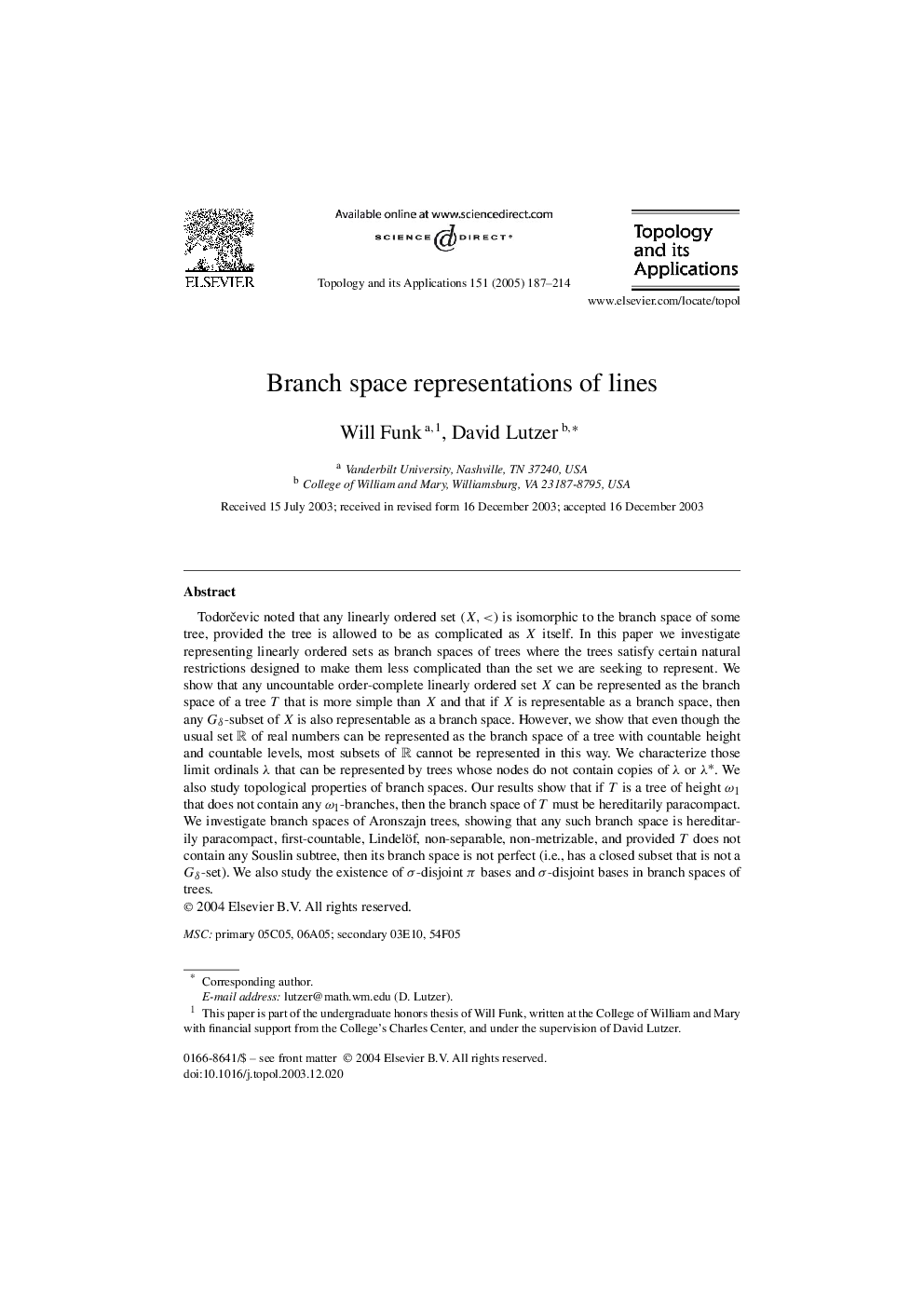| Article ID | Journal | Published Year | Pages | File Type |
|---|---|---|---|---|
| 9516670 | Topology and its Applications | 2005 | 28 Pages |
Abstract
TodorÄevic noted that any linearly ordered set (X,<) is isomorphic to the branch space of some tree, provided the tree is allowed to be as complicated as X itself. In this paper we investigate representing linearly ordered sets as branch spaces of trees where the trees satisfy certain natural restrictions designed to make them less complicated than the set we are seeking to represent. We show that any uncountable order-complete linearly ordered set X can be represented as the branch space of a tree T that is more simple than X and that if X is representable as a branch space, then any Gδ-subset of X is also representable as a branch space. However, we show that even though the usual set R of real numbers can be represented as the branch space of a tree with countable height and countable levels, most subsets of R cannot be represented in this way. We characterize those limit ordinals λ that can be represented by trees whose nodes do not contain copies of λ or λâ. We also study topological properties of branch spaces. Our results show that if T is a tree of height Ï1 that does not contain any Ï1-branches, then the branch space of T must be hereditarily paracompact. We investigate branch spaces of Aronszajn trees, showing that any such branch space is hereditarily paracompact, first-countable, Lindelöf, non-separable, non-metrizable, and provided T does not contain any Souslin subtree, then its branch space is not perfect (i.e., has a closed subset that is not a Gδ-set). We also study the existence of Ï-disjoint Ï bases and Ï-disjoint bases in branch spaces of trees.
Related Topics
Physical Sciences and Engineering
Mathematics
Geometry and Topology
Authors
Will Funk, David Lutzer,
